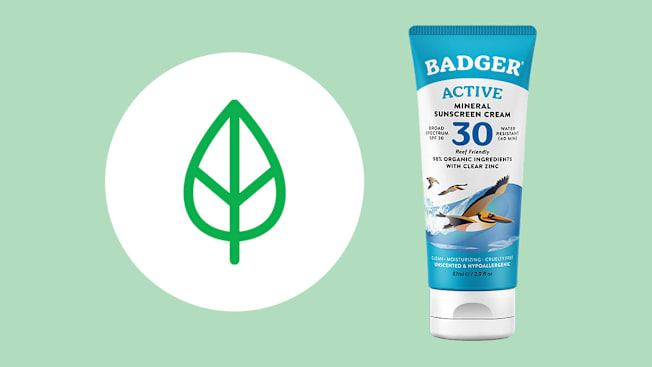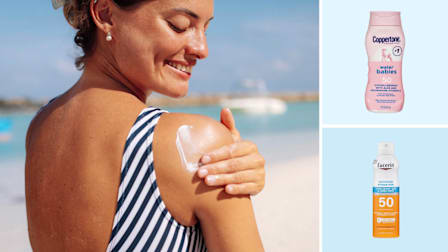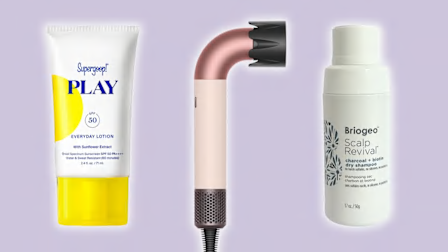Find a Reef-Friendly Sunscreen
CR's tests reveal sunscreens that may help protect ocean life
When you shop through retailer links on our site, we may earn affiliate commissions. 100% of the fees we collect are used to support our nonprofit mission. Learn more.
When you’re choosing a sunscreen, the most important factor to consider is how well it will protect your skin from the sun’s harmful ultraviolet rays. But you also want one that won’t damage coral reefs and other ocean life. Consumer Reports rates sunscreens for effectiveness against UV rays, and our sustainability experts assign a Green Choice designation (a green leaf icon) to products that are more likely to be ocean- and reef-friendly.
The degree of damage to waterways and ocean life that can be attributed to sunscreens is still a matter of debate, and none of the UV-blocking ingredients in them have been definitively shown to be safe for the environment. But some ingredients are thought to be better than others, and there are several factors that contribute to a sunscreen’s environmental footprint. CR’s sustainability experts used the best information currently available to identify three criteria that qualify a sunscreen as a Green Choice.
Sunscreen Ingredients and the Environment
Our experts say that mineral sunscreens—those that contain titanium dioxide, zinc oxide, or both—are likely better for the environment than sunscreens with one or more chemical active ingredients. Those are avobenzone, ecamsule, homosalate, octisalate, octinoxate, octocrylene, octyl salicylate, and oxybenzone.
CR's Green Choice Sunscreens
There are big differences in UV protection among the mineral sunscreens in our tests. If you prefer to use one of them, we strongly suggest choosing a product with a CR average tested SPF of at least 15. We’ve listed some of these below. CR members can access the details for each sunscreen and our full ratings.
But no matter what kind of sunscreen you use, you should always apply enough of it—an ounce, or about a shot-glass full if you’re wearing a bathing suit—and reapply it every 2 hours you’re outdoors or immediately after swimming or sweating. If you use a mineral sunscreen, these steps are especially important because mineral sunscreens don’t shield your skin as well.
What's a Reef-Friendly Sunscreen?
“Reef-friendly” and “reef-safe” have become common claims on sunscreen labels. The terms have no standard definition, but they’re most often found on sunscreens that contain only mineral active ingredients. In several places around the world—Florida, Hawaii, Thailand, and the U.S. Virgin Islands, to name a few—some chemical sunscreen ingredients are banned either completely or in certain areas to protect marine ecosystems.
You’ll also see these claims on some chemical sunscreens that don’t contain oxybenzone or octinoxate. “These two chemicals are thought to have the most detrimental effects on ocean life, and they’re included in the sunscreen bans,” says Shanika Whitehurst, the associate director for product sustainability, research, and testing at CR, who helped develop the Green Choice criteria for sunscreens.
None of the sunscreens that earn CR’s recommendation contain either of these two chemicals. But they do have other UV filters, such as avobenzone and octocrylene, that are also suspected of causing environmental harm. “That’s why none of the chemical sunscreens in our ratings can be labeled Green Choice,” Whitehurst says.
Sunscreen can wash off your body into ocean water when you’re at the beach, and it can also enter waterways when you shower. You can improve the eco-friendly profile of any sunscreen by wearing a rash guard instead of a bathing suit at the beach or pool, clothing that shields your skin when you’re outdoors. This allows you to apply sunscreen only to exposed skin, which significantly reduces the amount you need to use and, therefore, the amount that gets into the environment.
What Makes a Sunscreen a Green Choice?
Sunscreen must earn top scores in these key environmental assessments:
Formulation/active ingredients: To get a Green Choice designation, a sunscreen can’t contain the UV filters avobenzone, octinoxate, octocrylene, or oxybenzone—ingredients that are included in one or more sunscreen bans. For the most part, that leaves sunscreens that only contain titanium dioxide, zinc oxide, or both as active ingredients. All of our Green Choice sunscreens have only those two active ingredients.
UV protection: “When looking at the sustainability of a product, you have to think about where the needs of the environment and the needs of people meet,” Whitehurst says. “In this case, we considered what will allow people to protect themselves from the sun but also help protect the environment.” The sunscreens that provide the best UV protection in our tests have chemically active ingredients, but these may have adverse environmental effects. Mineral sunscreens are better for the environment, but they don’t protect as well. Green Choice sunscreens are the mineral products that were most protective in our ratings. The lowest-rated mineral sunscreens in our tests—those with an Overall Score below 40—are not Green Choice.
Packaging: To receive a high score in this measure, the packaging must be minimal and recyclable. For example, a tube of sunscreen that comes in a box loses points for its packaging. Spray sunscreens are also dinged for their packaging; the cans aren’t always recyclable because of potential safety concerns around pressurized air. And they could explode or combust if punctured. In addition, the ingredients used in propellants can contribute to air pollution.

































